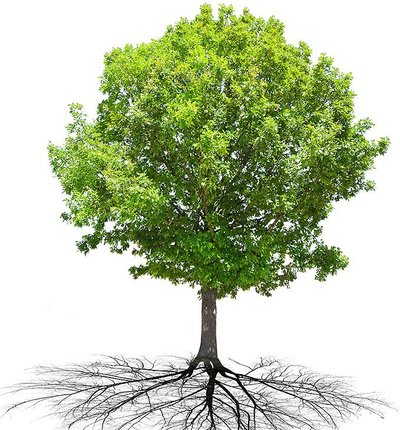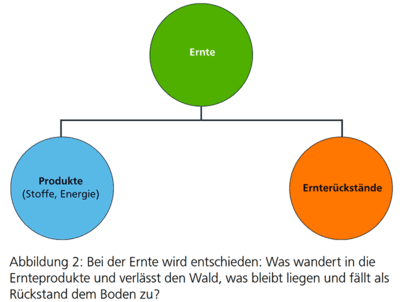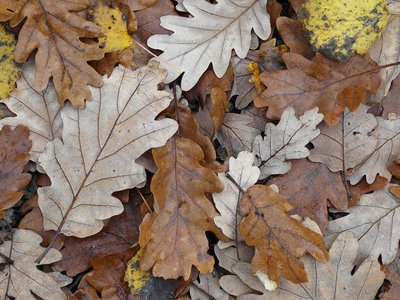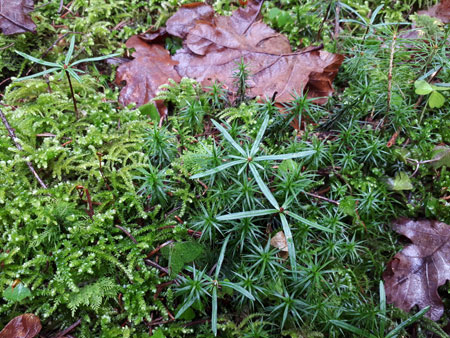
Fig. 1: The nutrients enter the tree from the soil via the roots, and some of them stay there until the tree is felled. Their fate is decided after harvest: Either they are removed from the forest as part of the harvest products or they are returned to the soil as crop residues (Picture: A. Potapov, fotolia).
Forests work according to the principle of a recycling economy. The trees penetrate the soil with their root systems and extract nutrients and water from it. As the trees grow up, the soil is thus stripped of nutrients and degraded, whilst the trees themselves steadily accumulate nutrients. It is only when the trees die that this changes in natural forest conditions: the lifeless components of the trees fall to the ground, thus giving the soil back what the trees have previously taken.
This process of self-fertilisation has enabled forests to survive for centuries without additional fertilisers. In the long term, the active movement of the nutrients from the subsoil to the topsoil even increases the fertility of forest soils. Trees thus create their own favourable conditions on the site.
Unused does not mean useless
Crop residues are thus not waste products, but a key element of the forest’s own recycling economy. If we wish to extend the harvest to include what have been waste products up to now, we must always weigh up the advantages and disadvantages. Crown material as an additional harvest product generates revenue and at the same time provides energy from a renewable raw material. However, the disadvantage is that the gradual loss of soil fertility and humus formation is at the cost of soil quality.
Where we draw the line between product and crop residues (Fig. 2) always has economic consequences, too. Utilisation fills our coffers immediately, whereas non-utilisation has a delayed effect and can only bring revenue indirectly by conserving or increasing the soil fertility.
Forest soil - a scarce resource
Forest soil as a resource is scarce. Just a few decimetres of the Earth’s surface determine the possibilities for forest production. Mineral weathering does provide some nutrients to the soil, but sooner or later, these minerals are also used up.
One solution is to find new sources of nutrients. This would mean applying a fertiliser to the scarce resource forest soil to top it up with nutrients or to compensate for losses caused by utilisation. The ash resulting from the burning of the biomass could be used for this. In this case, we would be substituting a mineral fertiliser for the self-fertilisation with organic crop residue material, as in the agricultural sector.
Trees and agricultural crops do however differ considerably in terms of their growth dynamics and thus also in their nutrient uptake. The key benefit of a natural supply of fertiliser in the form of humus is the slow but even, loss-free release of nutrients. The other advantage is the optimum balance of the nutrients: crop residues that have become humus contain the nutrients in exactly the proportions that the trees need. Crop residues are thus a cost-effective complex or complete fertiliser.
Wise limitation of utilisation
Humus formation is important for soil fertility. For humus to form, there must be sufficient litter, and the humus formed from it must decompose and be made available to the trees at an appropriate rate. A key element of humus management, according to Karl Gayer, is the "wise limitation of utilisation”.
A limitation of utilisation is wise if what is sacrificed is offset by other advantages. These advantages are obvious when it comes to leaving harvest residues in the forest: It is far less a sacrifice than an accumulation of reserves to secure or increase the fertility of the soil.
Our knowledge is still patchy
It is important to determine the “safe level” of crown biomass use. This must be done before intensive harvesting measures to ensure that these remain within the boundaries of nutrient sustainability. It is however costly and time-consuming to reliably determine the data necessary for nutrient management by examining the nutrient content levels. The nutrient balances cannot be summarised for whole enterprises, but must be related to specific small sites. Information is needed on the import and export of nutrients, mineral weathering and the nutrient contents of the harvested products. Our knowledge here is still incomplete and not available for extensive areas. It is also difficult to determine the individual elements of the nutrient balance precisely enough everywhere to be sure of not exceeding the boundaries of sustainability in the utilisation.
There is thus a lot to be said for being cautious - particularly on sites with low nutrient supplies; here the risk of unintentional over-utilisation is particularly high. It certainly makes more sense to be cautious and to consider harvest residues as an investment in soil fertility. With this conservative approach, we are on the safe side in terms of sustainability and this has a positive effect on soil fertility.



